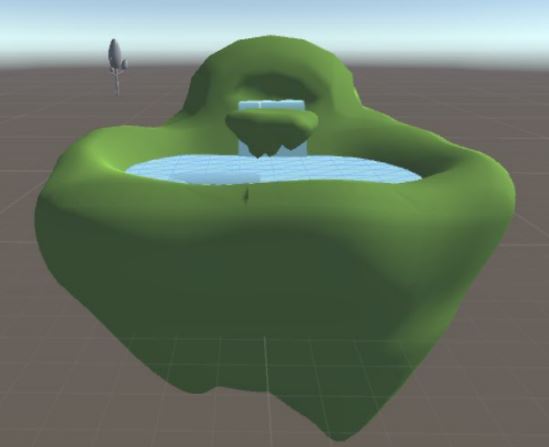We have to:
- set the narrative and character
- produce thumbnail sketches, a final concept illustration and a model sheet
- create a low res character model
- make a high res shell around the model
- transfer maps and textures
- final render
Setting
The Glorious Kingdom of Nuorbis, whose arms reached most of the
Earth, rose to power after The Collapse, a combination of nuclear wars and a
string of natural disasters that had devastated the planet and eradicated
almost 85% of the human population. A few northern countries merged together
and reinstated an absolute monarchy in the hopes of herding the remaining
people and the Earth away from the brink of extinction. Technology was heavily
invested in to aid repopulation and maximise productivity, leading to the
development of functioning androids and cybernetic organisms – humans who had
lost functions restored to them through this technology. Androids and humans have
lived side by side for centuries. With androids taking up laborious and mundane
jobs, humans have more time for scientific advances and artistic pleasures.
Recently, however, there have been reports of androids
achieving sentience all over the world. A small group of rebels have appeared,
demanding the rights and lifestyles of humans, threatening the balance and stability
of Nuorbis.
You are a knight of the Queensguard. With a global civil war
brewing, you have been asked to support the controlling Queen in quelling the
storm as a spy – but will you? As a cyborg, you have been put in a peculiar
position; part human, part machine, how can you raise your hand against your
kin? Do you rally for your Queen, betray your friends to join the rebellion, or
seek for a peaceful solution that will benefit everyone? You ask yourself if
that is even possible, before making your decision…
***
I immediately had some ideas of what I wanted the game and character to be about; it would be stealth, sci-fi game, where the character's cyborg status would be the catalyst for the conflict. This is where the idea of humans vs androids came from, a common trope. I also knew I wanted the game to have multiple routes which would have multiple endings and story elements exclusive to each route. So, the game would allow players to choose a side, or to remain neutral and it would mess with the player's sense of morality.
Sci-fi is not that interesting to me, so I found it difficult to come up with a convincing setting at first. Instead, I thought about how I could add in elements of things I do like to make it easier to work with. I recently became inspired by King Louis XIV's reign of France in the 1700s. He enforced an absolute monarchy, so everything he said was law. This made it very difficult for anyone to object or protest, as it would be considered treason. I thought that if androids really existed and became sentient, many humans would rally with them for equal rights, especially as societies become more and more open minded as time goes on. For the conflict like that of a civil war, it would have to be quite divided and there would have to be a solid reason why most humans would be against the androids. A closed minded community would be ideal for this, so I wondered if I could create a setting like the 1700s but with technology. In the end, I thought of a world where a monarch like Louis XIV needed to be in charge and tried to relate that to the rise of androids.
The name "Nuorbis" came from Latin; "nuvo" for new and "orbis" for world. I researched how countries got their names and they are often named after people or things that the land reminded the founder of in their native languages. Nuorbis is supposed to be some European countries merged together, like England, France and Spain. The languages from these countries are Latin based so that's why I chose to create a name from Latin. "New world" seemed appropriate and is often associated with a utopian ideal.
The reason I wanted the character's cyborgism to be a point of conflict is because it reminded me of the inner conflict of being of mixed ethnicity. My dad is Jamaican and my mum is Irish and I have often struggled with my identity, with people often asking me which side I prefer. I wanted to reflect this part of myself in my character while also making her struggle relevant to the story line.
I also did some research into events that almost led to human extinction and decided on a combination of natural disasters and war as the reason for The Collapse. I wanted to play on the current global warming issue, as well as rising tensions between countries at the moment which people are worried will start another war. I called it "The Collapse" because big events in history have always had dramatic names, like the Black Plague and the Great Depression.
I also did some research into events that almost led to human extinction and decided on a combination of natural disasters and war as the reason for The Collapse. I wanted to play on the current global warming issue, as well as rising tensions between countries at the moment which people are worried will start another war. I called it "The Collapse" because big events in history have always had dramatic names, like the Black Plague and the Great Depression.
[to be updated]










































